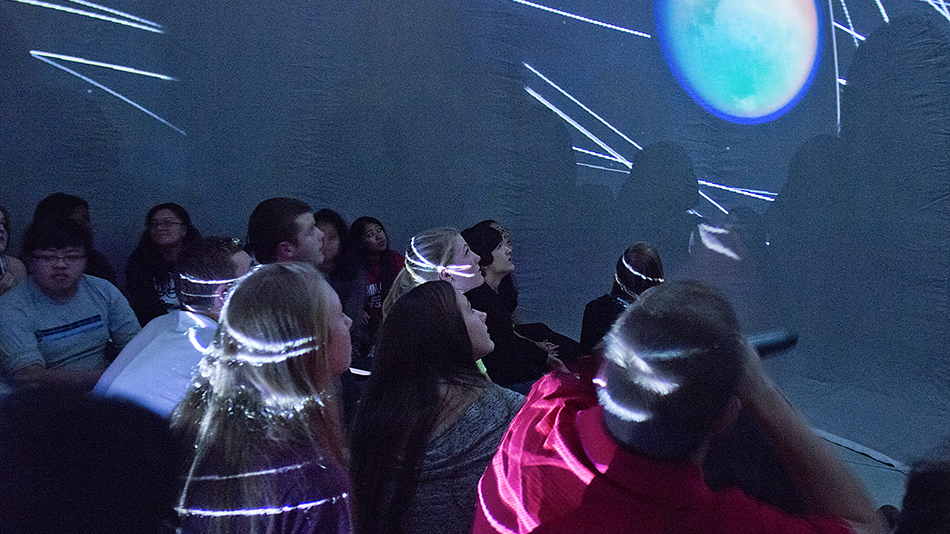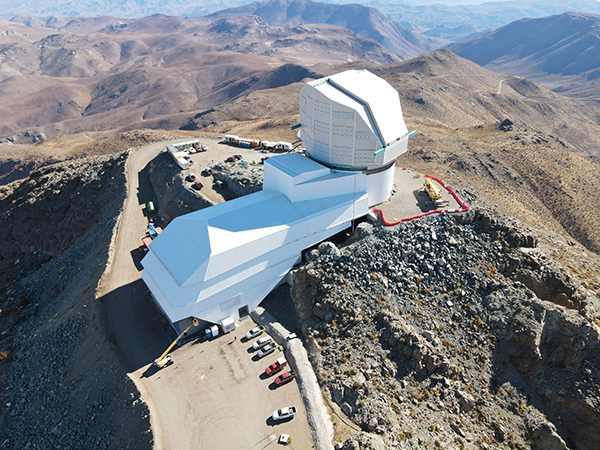
Astronomy is the quest to make the Universe comprehensible — an adventure into the beginning of time and through the vast distances of space. We ask how stars and planetary systems form and evolve, how galaxies form, how the elements arose, and probe the origin, fate, and structure of the Universe. Along the way we challenge and enrich physics with our discoveries.
VISIT DEPARTMENT WEBSITE87
Undergraduate majors
EDUCATION
The Astronomy Department provides engaging and challenging research opportunities covering the spectrum of modern astrophysics. Courses provide the background; the close, diverse community of learning provides the excitement; and the array of observational and computational tools provides the opportunities for everyone to participate and learn together.
Our undergraduate program is one of the largest in the nation, graduating approximately 36 students annually, nearly all of whom also major in physics and participate in research. Many non-majors also enroll in introductory astronomy courses, with annual course enrollments totaling over 2,700 — third largest in the nation in 2021-2022. Our graduate program was ranked in the top half-dozen in the nation in the most recent (2010) review by the NRC of the National Academy of Sciences. All graduate students receive full financial support, allowing them to participate fully in cutting-edge research.
Students
Autumn 2023
- 87 Undergraduate majors
- 29 PhD students
Degrees Awarded
2022-2023
- 38 Bachelor of Science degrees
- 7 Master of Science degrees
- 6 PhD degrees
RESEARCH

The Department of Astronomy currently has more than 100 active research grants, representing several millions of dollars in research funding. These scientific projects span from the study of asteroids to understanding the emergence of structure in the early Universe. The Department’s research frequently crosses the traditional boundaries of astronomy and involves active collaboration with other departments across campus. These cross-disciplinary studies are particularly vital to the Department’s quest to understand planetary systems beyond our own, through the work of the Virtual Planetary Laboratory.
The Department is also a major driver in the growing field of time-domain astronomy, which uses “movies of the sky” to find and understand new astrophysical phenomena while peering deeply into the Universe. Our investments in the Zwicky Transient Facility and the Vera C. Rubin Observatory are cementing our role in this new area of discovery. These innovative projects are tightly coupled to the Department’s expertise in merging astronomy with data science, to use tools from statistics and computer science to drive astrophysical discovery, including in the new Data Intensive Research in Astrophysics and Cosmology (DIRAC) center.
Astronomy faculty take advantage of superb facilities to drive their research. The Department has leading roles in two major telescope projects: the 3.5-m research telescope and the 2.5-m Sloan Digital Sky Survey, both in the high mountains of New Mexico. In addition, faculty, postdocs, and students are major users and developers of unique telescopes in space (such as the Hubble Space Telescope and JWST) and the largest telescopes on the ground. The Department likewise uses world-class computational facilities to simulate complicated astrophysical processes on scales from planets to the largest structures in the Universe.
Areas of Research
-

The Vera C.Rubin Observatory, under construction in Chile, will record the time evolution of over half the sky and create the first motion picture of our Universe. The University of Washington is a founding partner in this
international project.Astronomical surveys and time-domain studies; data science; astronomical instrumentation
- Growth and structure of the solar system; stability of planetary orbits; extrasolar planets
- Astrobiology and conditions for finding life elsewhere
- Stellar structure and evolution
- Astrophysics: dark matter, energy, gravitation, radiation physics, relativistic accretion disks, computational astrophysics
- Formation, evolution, and structure of the Milky Way, other galaxies, cirumgalactic media, intergalactic media, and quasars
- Mapping the large-scale structure of the Cosmos; cosmology, and the early Universe
- Multiple star systems: mass-exchange binaries, high-energy emissions, clusters, and stellar dynamics
- Stellar exotica: flare stars, very low- and very high-mass stars, stellar winds and outflows
FACULTY & RESEARCHERS

Autumn 2023
- 7 Professors
- 5 Associate Professors
- 4 Research Professors (all ranks)
- 4 Teaching Professors
- 11 Postdoctoral Researchers
- 17 Research Scientists
- 29 Graduate Students
Faculty Awards & Honors
Department of Astronomy faculty serve in leadership positions in many national and international projects such as the Hubble Space Telescope, new satellites in NASA’s pipeline, huge new telescopes on the ground, and the UW Astrobiology program. Faculty honors include:
- 2 National Academy of Sciences members
- 4 American Association for the Advancement of Science fellows
- 3 CAREER Grants, National Science Foundation
- 4 Sloan Foundation Fellows
- 1 Beatrice M. Tinsley Prize, American Astronomical Society
- 1 Leroy Doggett Prize for Historical Astronomy
- 1 Frank Drake Award
-
1 Newton Lacy Pierce Prize, American Astronomical Society
- 1 President, American Astronomical Society (AAS)
DIVERSITY AND OUTREACH
Undergraduates, with guidance from a faculty advisor, offer bi-monthly viewing nights for the public at the UW’s Theodore Jacobsen Observatory, including talks about the night sky and modern astronomical research. More than 1,000 visitors attend our open house nights annually.
The Astronomy Department recognizes the need for a more diverse scientific community. To this end, the Pre-Major in Astronomy Program (Pre-MAP) preferentially targets traditionally underrepresented freshmen, sophomores, and college transfer students. Pre-MAP engages students in astronomy research and provides them with mentoring as soon as they begin their careers at the UW. Currently, more than 40% of our majors are from groups that are historically underrepresented in STEM fields. Visit our Pre-MAP page for more information, including student profiles, past research projects, and photos from field trips.
The students in our department invite K-12 students to campus for planetarium shows, reaching nearly 100 school groups each year via our recently upgraded digital facilities. On the first Friday of each month, our undergraduates and graduate students offer planetarium shows for the general public.
CONTACT
Department of Astronomy
Box 351580
University of Washington
Seattle, WA 98195
(206) 543-2888
depts.washington.edu/astron
last update: November 2023
